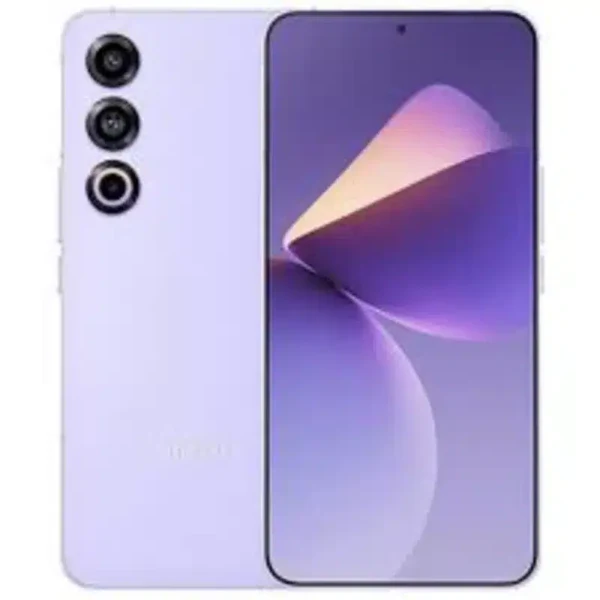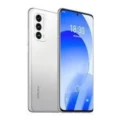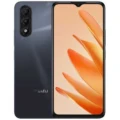Meizu 21 Note





- : 16GB RAM Snapdragon 8 Gen 2
- : 6.78" 1264x2780 pixels
- : 5500mAh 65W
- : 50MP 4320p
Meizu 21 Note: A Solid Performer
Key Specifications
- Display: 6.78-inch LTPO OLED, 1264 x 2780 pixels, 144Hz refresh rate
- Processor: Qualcomm Snapdragon 8 Gen 2
- RAM: 16GB
- Storage: 256GB or 512GB
- Camera: Dual rear (50MP main + 13MP ultrawide), 16MP front
- Battery: 5500mAh with 65W fast charging
- OS: Flyme OS based on Android 13
Design and Build
The Meizu 21 Note boasts a sleek and modern design, featuring a glass front, aluminum frame, and a plastic back. Its slim profile and comfortable grip make it a pleasure to hold. The device is IP65 rated for dust and water resistance, ensuring durability in various conditions.
Impressive Display
The 6.78-inch LTPO OLED display delivers stunning visuals with vibrant colors, deep blacks, and excellent contrast. The 144Hz refresh rate ensures smooth scrolling and responsive touch interactions. Whether you’re watching videos, playing games, or simply browsing the web, the display offers an immersive experience.
Powerful Performance
Equipped with the flagship Qualcomm Snapdragon 8 Gen 2 processor and a generous 16GB of RAM, the Meizu 21 Note delivers exceptional performance. Handling demanding tasks, multitasking, and resource-intensive games is effortless. The ample storage options provide plenty of space for your apps, photos, and videos.
Capable Camera System
The dual rear camera setup captures detailed and vibrant images. The 50MP main sensor excels in various lighting conditions, while the 13MP ultrawide lens expands your shooting possibilities. The 16MP front camera takes decent selfies and supports various portrait modes.
Long-lasting Battery
The 5500mAh battery provides ample power to get you through the day comfortably. With 65W fast charging, you can quickly replenish the battery when needed.
Additional Features
- In-display fingerprint sensor for secure unlocking
- Stereo speakers for immersive audio
- Support for 5G connectivity
Overall, the Meizu 21 Note is a well-rounded smartphone that offers a compelling combination of performance, design, and features. While it may not stand out in any particular area, it delivers a solid experience across the board.
Would you like to know more about a specific feature or compare it to another phone?
Want to Learn More?
Visit the official website of Meizu for detailed information about the Meizu M10:Meizu Official Website
Still Unsure?
If you’re still unsure about your choice, explore other options from Meizu at your nearest store: Meizu Store
Specs
Network
| 2G Network GSM 850 / 900 / 1800 / 1900 - SIM 1 & SIM 2 (dual-SIM) CDMA 800 / 1900 |
GSM 850 / 900 / 1800 / 1900 - SIM 1 & SIM 2 |
| 3G Network | HSDPA 850 / 900 / 2100 |
| 4G Network | 1, 3, 4, 5, 8, 28, 34, 38, 39, 40, 41 |
| 5G Network | 1, 3, 5, 8, 28, 38, 40, 41, 77, 78 SA/NSA |
| Speed | HSPA, LTE, 5G |
LAUNCH
| Announced | May, 2025 |
| Status | Available. Released 2024, May 21 |
BODY
| Dimensions | 162.4 x 76.9 x 8.2 mm (6.39 x 3.03 x 0.32 in) |
| Weight | 205 g (7.23 oz) |
| Build | Glass front, aluminum frame, plastic back |
| SIMs SIM (Subscriber Identity Module) is a small card that contains mobile network subscriber's account information. This allows the phone using the card to attach to a mobile network. The SIM card is most commonly associated with GSM and UMTS mobile networks. Moving a SIM card from one phone to another allows a subscriber to switch mobile phones without having to contact their mobile network carrier. SIM cards can also be used by a phone to store limited amounts of data, such as phone numbers and text messages. |
Dual SIM (Nano-SIM, dual stand-by) IP65 dust and water resistant |
Display
| Display Type Display Technology => A number of display technologies and types used in mobile phones => TFT (Thin Film Transistor), IPS (In-Place Switching), OLED (Organic Light Emitting Diode), AMOLED (Active-Matrix Organic Light-Emitting Diode), Super AMOLED (an even advanced version of AMOLED), Resistive Touchscreen (Resistive touchscreens contain two layer of conductive material with a very small gap between them which acts as a resistance), Capacitive Touchsceen (Capacitive touchscreen technology consists of a layer of glass coated with a transparent conductor) | LTPO OLED, 1B colors, 144Hz, HDR10+, 800 nits (typ), 1600 nits (HBM), 5000 nits (peak) |
| Size | 6.78 inches, 111.7 cm2 (~89.5% screen-to-body ratio) |
| Resolution | 1264 x 2780 pixels (~450 ppi density) |
PLATFORM
| Operating System OS => Every computer system run on a base software called Operating System (OS). Operating System controls all basic operations of the computer (such as smartphone, PDAs, tablet computers and other handheld devices). The Operating System allows the user to install and run third party applications (apps), apps are used to add new functionality to the device. | Flyme OS |
| Chipset Chipset is a group of integrated circuits designed to perform one or a more dedicated functions, often with real time computing constraints, Popular smartphones are equipped with more advanced embedded chipsets that can do many different tasks depending on their programming. | Qualcomm SM8550-AB Snapdragon 8 Gen 2 (4 nm) |
| CPU CPU (Central Processing Unit) mostly known as processors, CPU processes instructions in order to carry out certain functions that make your device operate properly. Processors are often described as the brain of computers, smartphones and tablets, Smartphones and tablets rely on processors to carry out their every task, Processors are an incredibly important factor in selecting any type of computing device, including your smartphone. | Octa-core (1x3.2 GHz Cortex-X3 & 2x2.8 GHz Cortex-A715 & 2x2.8 GHz Cortex-A710 & 3x2.0 GHz Cortex-A510) |
| GPU GPU (Graphics Processing Unit) is a single-chip processor designed to rapidly manipulate and alter memory to accelerate the creation of images in a frame buffer intended for output to a display, This includes things such as lighting effects, object transformations, and 3D motion. | Adreno 740 |
MEMORY
| Card Slot Memory Card Slot is a special slot for inserting a memory card. Memory cards allow you to expand the phone's built-in memory, A memory card (sometimes called a flash memory card or a storage card) is a small storage medium used to store data such as text, pictures, audio, and video, for use on small, portable or remote computing devices such as mobile phones, mp3 players, digital cameras. | No |
| Internal | 256GB 16GB RAM, 512GB 16GB RAM UFS |
MAIN CAMERA
| Cameras Specs Today’s smartphones come equipped with a very comprehensive set of camera related specifications. Our smartphone, for many of us, has become our primary camera due to it being the one we always have with us. |
50 MP, f/1.7, 24mm (wide), 1/1.56", PDAF, OIS 13 MP, f/2.4, 16mm, 122˚ (ultrawide), AF |
| Video | 8K, 4K, 1080p; gyro-EIS |
| Camera Features | Ring-LED flash, panorama, HDR |
SELFIE CAMERA
| Cameras Specs Today’s smartphones come equipped with a very comprehensive set of camera related specifications. Our smartphone, for many of us, has become our primary camera due to it being the one we always have with us. |
16 MP, f/2.5, (wide) |
| Features | HDR |
| Video | Yes |
SOUND
| Loudspeaker | Yes, with stereo speakers |
| 3.5mm jack | No |
COMMS
| WLAN |
Wi-Fi 802.11 а/b/g/n/ac/6e/7, tri-band |
| Positioning |
GPS (L1+L5), GLONASS, GALILEO, BDS, QZSS, NavIC |
| Bluetooth Bluetooth is a wireless communications technology for exchanging data between mobile phones, headsets, computers and other network devices over short distances without wires, Bluetooth technology was primarily designed to support simple wireless networking of personal consumer devices. | 5.3, A2DP, LE, aptX HD, LHDC |
| Infrared Infrared connectivity is an old wireless technology used to connect two electronic devices. It uses a beam of infrared light to transmit information and so requires direct line of sight and operates only at close range. | |
| USB | USB Type-C 2.0, OTG |
| NFC NFC (Near field communication) is a set of standards for smartphones and similar devices to establish peer-to-peer radio communications with each other by touching them together or bringing them into proximity, usually no more than a few inches. | |
| Radio |
Features
| Sensors Sensors are electronic components that detects and responds to some type of input from the physical environment. The specific input could be light, heat, motion, moisture, pressure and location, The output is generally a signal that is converted to use in computing systems, a location sensor, such as a GPS receiver is able to detect current location of your electronic device. |
Fingerprint (under display, ultrasonic), accelerometer, gyro, proximity, compass |
BATTERY
| Battery Type Battery Type => Cell phones run on various kinds of batteries depending on the manufacturer, phone size or shape and features. There are basically four types of cell phone batteries => Lithium Polymer, Lithium Ion, Nickel Metal Hydride and Nickel Cadmium. | Li-Ion (Lithium Ion) |
| Charging The functionality responsible for recharging batteries in portable devices, such as mobile phones, significantly influences both battery lifespan and the practicality of daily product usage.The charging process, encompassing factors like voltage, current, and completion actions, is contingent upon the battery's size and type.Contemporary battery chargers dynamically adjust charging parameters based on the battery's current charging state. Charging an empty battery poses no safety risk, allowing for a quicker charging process. Consequently, many charging speed benchmarks, including ours, specify the battery level achieved after a 30-minute session on an empty battery.Standard chargers with a power output of 5V/1A, equivalent to 5W, serve as a baseline, with anything surpassing this speed classified as quick or fast charging. | 65W wired, PD3 PPS, QC4+ |
MISC
| Colors |
Black, White |
| Price | About 330 EUR |
TESTS
Reviews
Disclaimer Note
We strive to maintain accurate and up-to-date content on our website for general information purposes only. Please refrain from using the material for business, legal, or any other decisions.



















